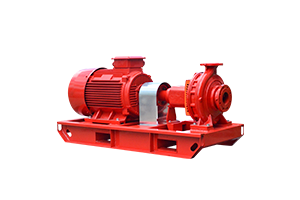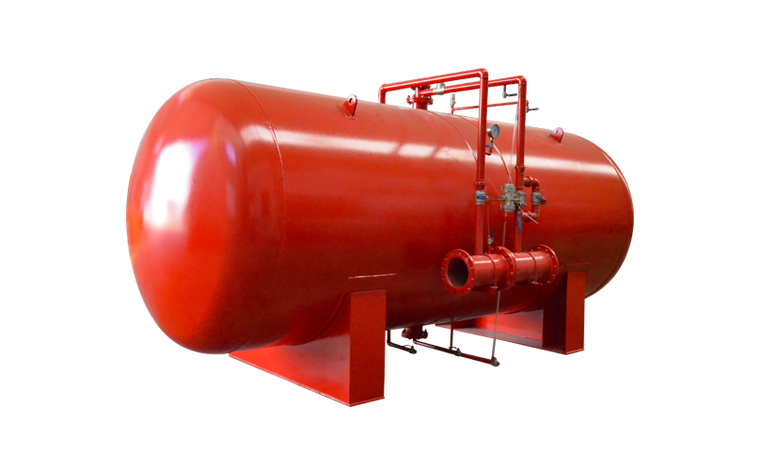-
 Jul 18, 2024What are the considerations for fire pump systems in high-rise residential buildings?- High Pressure and Capacity: Ensuring the system can deliver high-pressure water to upper floors.
Jul 18, 2024What are the considerations for fire pump systems in high-rise residential buildings?- High Pressure and Capacity: Ensuring the system can deliver high-pressure water to upper floors.
- Space Constraints: Designing compact systems that can fit within limited mechanical spaces.
- Tenant Safety: Prioritizing the safety of residents with reliable fire protection.
- Integration with Building Systems: Coordinating with other building systems, such as elevators and emergency lighting.View details -
 Jul 17, 2024How do fire pumps support fire protection in hospitality and hotel facilities?- Guest Safety: Ensuring reliable fire protection to safeguard guests and staff.
Jul 17, 2024How do fire pumps support fire protection in hospitality and hotel facilities?- Guest Safety: Ensuring reliable fire protection to safeguard guests and staff.
- Aesthetic Considerations: Designing systems that blend seamlessly with the aesthetic of the facility.
- Noise and Disruption Minimization: Ensuring minimal noise and disruption to maintain guest comfort.
- Compliance with Hospitality Standards: Adhering to fire safety regulations and standards specific to the hospitality industry.View details -
 Jul 17, 2024How do fire pumps support fire protection in oil and gas facilities?- Explosion-Proof Design: Using explosion-proof equipment to prevent ignition of flammable substances.
Jul 17, 2024How do fire pumps support fire protection in oil and gas facilities?- Explosion-Proof Design: Using explosion-proof equipment to prevent ignition of flammable substances.
- High Capacity and Pressure: Providing high-capacity and high-pressure systems to manage large fires.
- Chemical Compatibility: Ensuring materials are compatible with the chemicals present in the facility.
- Integration with Safety Systems: Coordinating with other safety systems, such as gas detection and emergency shutdown systems.View details -
 Jul 16, 2024What are the considerations for fire pump systems in public safety and emergency response facilities?- Reliability: Ensuring the system is highly reliable and can function under emergency conditions.
Jul 16, 2024What are the considerations for fire pump systems in public safety and emergency response facilities?- Reliability: Ensuring the system is highly reliable and can function under emergency conditions.
- Redundancy: Incorporating redundant systems to guarantee continuous operation even if one component fails.
- Rapid Response: Ensuring the system provides rapid activation and response to protect critical infrastructure and personnel.
- Regular Drills and Training: Conducting regular drills and training to ensure personnel are familiar with the fire pump system and emergency protocols.
View details -
 Jul 16, 2024What are the key factors in designing fire pump systems for luxury residential buildings?- Aesthetic Integration: Ensuring the system integrates seamlessly with the luxury aesthetics of the building.
Jul 16, 2024What are the key factors in designing fire pump systems for luxury residential buildings?- Aesthetic Integration: Ensuring the system integrates seamlessly with the luxury aesthetics of the building.
- Quiet Operation: Designing the system for minimal noise and vibration to maintain a peaceful living environment.
- High-End Materials: Using high-end, durable materials that match the building's quality standards.
- Advanced Monitoring: Implementing advanced monitoring and control systems for enhanced safety and reliability.
View details -
 Jul 15, 2024What are the key features of modern electric fire pump controllers?Key features include:
Jul 15, 2024What are the key features of modern electric fire pump controllers?Key features include:
Touchscreen interfaces: User-friendly interfaces for easier monitoring and control.
Remote monitoring: Capability to monitor and control the pump remotely through internet-connected devices.
Data logging: Recording operational data for analysis and maintenance planning.
Diagnostic tools: Built-in diagnostics to identify and troubleshoot issues quickly.
Alarm systems: Automated alarms for various faults, including electrical issues, low pressure, and overheating.View details

.png)
.png)

.png)


